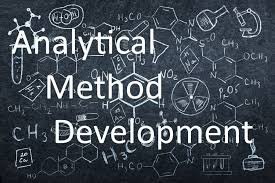Framework for Developing Analytical Techniques.

Framework for Developing Analytical Techniques
The development of analytical techniques is a structured process that ensures the reliability, accuracy, and efficiency of the method being created. This process is critical in various industries, including pharmaceuticals, environmental monitoring, food quality analysis, and clinical diagnostics. The goal is to establish a method that can consistently provide precise, reproducible, and meaningful results.
Here’s a detailed explanation of the framework for developing analytical techniques:
1. Problem Definition
-
Objective Identification: The first step in the development of an analytical technique is to clearly define the problem that needs to be addressed. What is being analyzed, and what properties or characteristics need to be measured? For example, is the goal to detect a specific substance, quantify the concentration of an analyte, or measure its physical properties?
-
Context: Understand the environment where the method will be applied, such as the type of sample (e.g., solid, liquid, biological), available resources, and the sensitivity required.
2. Research and Review of Existing Methods
-
Literature Review: A thorough review of existing techniques is essential to see if there is already a suitable method in place. If one exists, modifications or improvements can be made.
-
Benchmarking: Analyze existing methods’ strengths and weaknesses to help decide if they can be applied directly or need modification.
-
Comparison: If multiple methods are available, comparing their reliability, accuracy, and cost-effectiveness helps in selecting the most appropriate one.
3. Selecting the Analytical Technique
-
Choosing the Method Type: There are several categories of analytical techniques, including:
-
Spectroscopic Methods: UV-Vis, IR, NMR, etc.
-
Chromatographic Methods: HPLC, GC, etc.
-
Electrochemical Methods: Potentiometry, amperometry, etc.
-
Mass Spectrometry: for precise identification and quantification of compounds.
-
Microscopic Methods: for detailed structural analysis.
-
-
The selection is influenced by factors such as the sample matrix, analyte properties (size, charge, volatility), and required sensitivity.
4. Method Design
-
Optimization of Parameters: Once the analytical technique is selected, you need to define the optimal operating parameters, such as temperature, pH, solvent system, detection wavelength, and flow rates.
-
Sensitivity and Selectivity: Ensure that the method is sensitive enough to detect the analyte at the required concentrations and selective enough to avoid interference from other components in the sample.
-
Method Validation Requirements: Identify the parameters that will need to be validated, such as linearity, accuracy, precision, specificity, limit of detection (LOD), and limit of quantification (LOQ).
5. Development of the Methodology
-
Sample Preparation: One of the most critical steps in method development is designing an effective sample preparation procedure. This could include steps like extraction, filtration, or concentration, which ensure that the analyte is in a form suitable for analysis.
-
Standardization: Develop standards (calibration curves, reference materials) for quantification and accuracy checking.
6. Method Validation
Validation is a critical step to ensure the method’s reliability and accuracy. It includes several aspects:
-
Accuracy: The degree to which the method gives the true value.
-
Precision: The repeatability and reproducibility of the results.
-
Linearity: The method’s ability to produce results proportional to the concentration of the analyte.
-
Specificity: The ability to measure the analyte without interference from other substances in the sample.
-
Detection Limit (LOD) and Quantification Limit (LOQ): These measures define the lowest concentration of analyte that can be reliably detected or quantified.
-
Robustness: The method’s ability to remain unaffected by small variations in experimental conditions.
7. Optimization and Troubleshooting
-
Optimization: If initial results are not satisfactory, adjustments may be necessary. This can involve modifying the method parameters, improving sample preparation, or altering instrumentation settings.
-
Troubleshooting: Identify sources of error (e.g., instrument malfunction, sample contamination) and implement solutions to correct or minimize them.
8. Documentation and Standard Operating Procedures (SOPs)
-
Comprehensive Documentation: Every step of the method development process should be documented thoroughly, including the rationale for each decision and the final method parameters.
-
SOPs: Develop Standard Operating Procedures (SOPs) for the method to ensure that it can be consistently used and reproduced by different analysts.
9. Implementation
-
Training and Execution: Once validated and documented, the method is ready for implementation. Staff members should be trained to use the method effectively and efficiently.
-
Monitoring and Quality Control: Establish quality control checks to ensure the method continues to provide reliable results over time, including regular calibration and validation routines.
10. Review and Continuous Improvement
-
Ongoing Evaluation: Periodically assess the performance of the method, especially when new samples or analytes are introduced. If problems arise or if newer, better techniques become available, the method may need to be revised or replaced.
-
Feedback Loop: Ensure that feedback from real-world application is used to continuously improve the method.
Key Considerations Throughout the Process:
-
Cost and Feasibility: The chosen technique must be economically viable, taking into account equipment, reagents, and operational costs.
-
Regulatory Compliance: Ensure that the developed method complies with relevant industry standards, such as Good Laboratory Practice (GLP) or Good Manufacturing Practice (GMP), and regulatory bodies like the FDA, EMA, etc.
-
Scalability: For industrial applications, ensure that the method is scalable from laboratory to production environments without compromising accuracy or efficiency.
By following this framework, you ensure that the analytical method is not only scientifically sound but also practical and reliable for everyday use in real-world applications.
🎓 Discover one of the best Quality Assurance courses available — click below to explore the course that’s shaping future QA skills.

